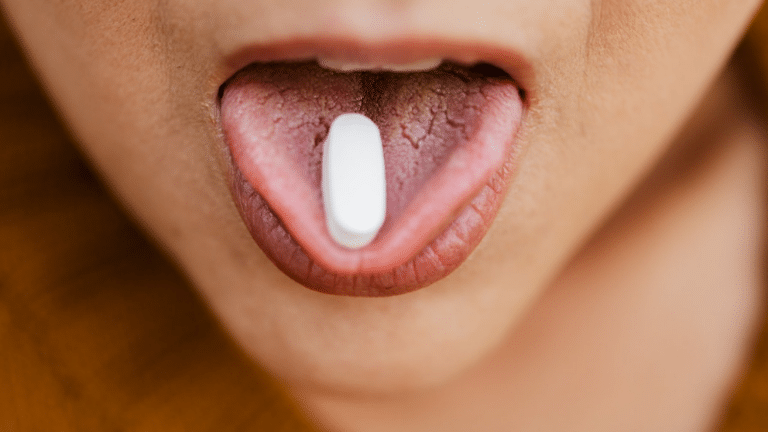Cholesterol Calculator: Determine Your CVD Risk Factors

Your heart and cardiovascular system are continuously exposed to a variety of risk factors. High cholesterol has one of the most significant influences on the development of cardiovascular diseases (CVD). Therefore, it is commonly checked during routine laboratory examinations.
The concentration of total cholesterol in the blood is only a general indicator. A cholesterol calculator needs to be used to determine the actual risk of developing atherosclerosis and subsequent cardiovascular complications. Read on to learn exactly how to calculate your cholesterol and triglyceride levels to keep this risk factor under control!
What Is Cholesterol and Why Is It Important For Our Health?
Cholesterol is a fatty substance that is made mainly in the liver. Smaller quantities find their way into our bodies through the food we consume. Contrary to popular belief, cholesterol is not just a “bad guy.” It is a critical structural component of all our cells and essential for producing vital hormones and vitamin D.
Our body absorbs about half of the cholesterol from food. Then, cholesterol enters the blood, which already contains some quantities produced in the liver. The risk of atherosclerosis in our blood vessels increases when normal cholesterol levels are exceeded, especially if other risk factors are present.
Because cholesterol and other lipids (fats) are insoluble in water, they bind to unique proteins in the blood plasma. These unique molecules are called lipoproteins. By them, lipids can be transported to tissues and organs.
HDL vs. LDL Cholesterol
There are two main types of lipoproteins in the body—LDL and HDL. The difference is in the lipid to protein ratio.
The low-density lipoproteins, LDL cholesterol, contains more cholesterol and less protein. To get rid of their fatty overload, they carry and release cholesterol on the walls of our blood vessels. This leads to the forming of atheromatous plaques that narrow or completely obstruct the lumen of blood vessels. Remember, atherosclerosis is one of the leading causes of CVDs like heart attack and stroke. So, what can be estimated by the cholesterol calculator is the risk of heart disease. This is why LDL is known as “bad cholesterol.”
The high-density lipoproteins (HDL), are produced in the liver. HDL cholesterol contains more protein and less cholesterol. Their function is entirely opposite from LDL—they take away cholesterol from the walls of the blood vessels and transport it to the liver for processing and removal from the body. In this way, HDL clears excess amounts of total cholesterol, reduces atherosclerosis, and subsequently lowers your risk of developing CVDs. Therefore, HDL is popularly known as “good cholesterol.”
What Are Triglycerides?
Apart from cholesterol, there are other fatty substances in the blood—triglycerides. So what causes high triglycerides? In short, they are the building blocks of fats. When we eat, the body converts fat into triglycerides to act as an energy reserve. Their levels increase mainly due to unhealthy diets high in saturated fats and excessive alcohol consumption.
What Happens If High Cholesterol Goes Untreated?
High blood levels of LDL cholesterol and triglycerides have been linked to the development of CVDs, along with other factors such as hypertension and diabetes mellitus. The risk of damage to the vascular walls and the formation of deposits and blockages increases when there is more “bad” and less “good” cholesterol in our blood. The good news is that the reduction in total cholesterol by 1% leads to a 2% reduction in the risk of developing cardiovascular disease.
Increased cholesterol levels may be caused by a familial predisposition as well, as is the case in about 3% of people. Usually, blood cholesterol is high from an early age and is unaffected by the diet. In these cases, specialists recommend taking lipid-lowering agents such as statins from a younger age. These drugs are prescribed and taken under medical supervision.
However, it is a myth that lipid-lowering medication can be stopped as soon as your results are within the cholesterol and triglycerides normal range. The levels may be lowered, but if you stop taking the drug, the cholesterol, and especially LDL, will rise again. You should consult your doctor about any change in your treatment.
In about 20% of the population, high LDL cholesterol levels are associated with another underlying condition such as:
- obesity
- diabetes
- hypothyroidism (decreased thyroid function)
- increased adrenal function
Taking specific medication also leads to an increase in cholesterol concentrations in the blood. Estrogens, corticosteroids, diuretics, beta-blockers, and contraceptives are known culprits.
Bad Cholesterol Levels During the Pandemic
Recent research has proven that people with high LDL cholesterol are at an increased risk of getting COVID-19. In fact, scientists think that LDL leads to vasculopathy (blood vessel abnormalities) in COVID-19 patients. The virus puts the body in a pro-inflammatory state, harming the lung tissues and the heart while increasing the chances of coagulopathy or blood clots, too. So, people with high cholesterol and COVID-19 are at even higher risk of having a cardiovascular event.
How to Maintain Healthy Cholesterol Levels
Only foods of animal origin contain cholesterol. The richest sources are:
- fatty meats
- chicken skin
- animal organs (especially the brain, liver, and kidneys)
- shrimp
- egg yolks
- high-fat dairy products
You should also note that if you decide to cut fat from your diet completely, cholesterol will not normalize by itself.
There are some tips on how to maintain a normal cholesterol level:
- Eat foods rich in soluble fiber.
- Manage your stress.
- Include the recommended number of servings of fruits and vegetables in your diet.
- Quit smoking and excessive drinking, as alcohol and cholesterol levels are interrelated.
- Restrict high-calorie sweet and fatty foods.
- Engage in regular physical activity.
- Lose excess weight and maintain a normal BMI.
Even people with high LDL levels can eat eggs and dairy products in moderation. However, it is recommended to restrict the number of egg yolks to up to three per week. For dairy products, it is advisable to choose low-fat or non-fat cheeses, yogurts, cottage cheese, and sour cream in order to have normal total cholesterol levels.
Interestingly, garlic has been shown to reduce liver cholesterol production. And oatmeal has a similar effect. Moreover, research relates the ketogenic diet and cholesterol levels. In fact, it has confirmed that this diet can help lower total cholesterol and LDL while increasing HDL levels.
A healthy diet is crucial, but it must be a lifelong change to ensure good results. Crash diets won’t result in normal cholesterol levels for adults.
There are other factors that also affect its concentration in the bloodstream. Smoking decreases HDL cholesterol levels and thus becomes a risk factor for developing heart disease and vascular incidents in the brain, even when total cholesterol is at healthy levels.
Occasionally, lipid-lowering medication may be required to reach the recommended cholesterol levels. It is crucial to know about the interaction between statins and grapefruit, which blocks the enzyme associated with the breakdown of the drug. Too much grapefruit juice can lead to the accumulation of the drug in the body. This may prevent you from achieving good cholesterol levels and increase the likelihood of side effects. And the most severe one is acute renal failure.
How to Determine Your Lipid Profile by Using a Cholesterol Calculator
Based on your blood sample test results, you can easily calculate the most common cholesterol parameters essential for the health of your heart and overall wellness. They can be provided by the lipid profile calculation chart. And they include LDL/HDL, triglycerides/HDL, and total cholesterol/HDL ratios. You need to know the four fundamental values (total cholesterol, LDL, HDL, triglycerides) to use a cholesterol levels calculator.
In order to calculate total cholesterol, you need only three values, which are interconnected according to this formula: TC=HDL+LDL+0.2xTG (or you can just enter them in a total cholesterol calculator). Let’s first determine the normal and elevated values before calculating their ratios which serve as reliable indicators of CVD risk.
Total Cholesterol Levels
Essentially, the complete blood cholesterol concentration is just a rough estimate of your cholesterol levels. Sometimes, these results may be misleading because they combine LDL and HDL levels in the cholesterol ratio calculator to give a single value which does not provide sufficient insight into the risks of developing atherosclerosis and CVD.
Nevertheless, these are normal, borderline, and elevated total cholesterol values:
- The normal total blood cholesterol levels should be below 200 mg/dL.
- The borderline values for total cholesterol are 200–239 mg/dL.
- Results above 240 mg/dL indicate high total cholesterol.
HDL Levels
HDL is a type of cholesterol transmitted from other body areas into the liver to take part in metabolism and eliminate bile acids from our body. That’s why HDL cholesterol levels are the only type where higher levels are not only allowed but recommended. Women typically tend to have higher HDL concentrations than men.
- The ideal HDL cholesterol range is over 60 mg/dL.
- Borderline HDL values are 40–59 mg/dL.
- Less than 40 mg/dL of HDL increases your risk of developing CVDs.
LDL Levels
Maintaining LDL concentrations within the optimal range is vital for cardiovascular health. You can enter your total cholesterol, HDL, and triglycerides values into an LDL cholesterol calculator to determine your LDL values. If you aren’t sure how to read the results, here’s a clarification:
- The normal LDL cholesterol range is less than 100 mg/dL.
- Above ideal levels are 100–129 mg/dL.
- The borderline high values are 130–159 mg/dL.
- Elevated LDL values are 160–189 mg/dL.
- Levels over 190 mg/dL are considered dangerously high.
There’s a new LDL calculation β-quantification to estimate low-density lipoprotein cholesterol (LDL-C) concentration, surpassing two other LDL-C formulas, and giving hope to be a more precise tool in assessing cardiovascular risk.
Triglycerides Levels
Triglycerides are not cholesterol, but elevated triglyceride levels may be an indication of a lipoprotein disorder. They are often accompanied by other diseases, like diabetes.
- Normal triglycerides levels should be under 150 mg/dL.
- The borderline values for them are 150–199 mg/dL.
- Elevated triglycerides concentrations are 200–499 mg/dL.
- Very high levels include values above 500 mg/dL.
Cholesterol Calculator Ratio
Three indicators describe the risk of developing cardiovascular disease with a high level of precision. You can use a cholesterol level calculator to get ratios of the values mentioned above.
LDL to HDL Ratio
This ratio is achieved by dividing the LDL with the HDL concentration. It is one of the most common factors for detecting an elevated risk of heart disease. According to the LDL/HDL ratio chart:
- The optimal LDL/HDL ratio should be below 2.0.
- The average ratio is under 5.0.
- The cholesterol ratio chart implies that If the resulting value is above 5.0, this is considered an elevated ratio.
Triglycerides to HDL Ratio
The triglycerides/HDL proportion is calculated by dividing the triglycerides by the HDL levels. A cholesterol risk calculator for this ratio is also used to identify the likelihood of a heart attack, though not as often as the previous ratio.
- The normal ratio is 2.0 or less.
- Values between 4.0–6.0 are considered to be high.
- A triglycerides/HDL ratio of 6.0 or more is considered very high.
Total Cholesterol to HDL Ratio
The total cholesterol to HDL ratio calculator is used to determine their proportion in the blood. The total cholesterol/HDL ratio is considered to be the least precise in determining your health risk. So, what should your cholesterol ratio be?
- The optimum ratio is below 3.5.
- An average total cholesterol/HDL ratio is considered below 5.0.
- And an elevated ratio is above 5.0.
How Does a Cholesterol Calculator Work?
Some LDL calculators operate using the Friedewald equation from 1972, while others use the Iranian lipid profile calculation formula from 2008. Based on the blood sample results for total cholesterol, triglycerides, and HDL, it calculates LDL cholesterol levels. The second equation is often suggested for those with a small carbohydrate intake when the triglyceride content is smaller than the mean value required.
You can choose to type the three values into the cholesterol calculator as mmol/L or mg/dL according to the obtained results from the lab.
mg/dL Calculation
- Fridewald equation: LDL=TC-HDL-TG/0.5 (mg/dL)
- Iranian formula: LDL=TC/1.19+TG/1.9-HDL/1.1-38 (mg/dL)
mmol/L Calculation
- Friedewald equation: LDL=TC-HDL-TG/2.17 (mmol/L)
- Iranian formula: LDL=TC/1.19+TG/0.81-HDL/1.1-0.98 (mmol/L)
Conclusion
Keeping the ideal cholesterol levels is one of the most important ways of preventing cardiovascular problems. And they aren’t the only problems high cholesterol can bring about. Although a cholesterol calculator is a helpful tool, it should be known that the required cholesterol fractions of a person and their health hazards may vary. Do not hesitate to consult your physician to cross-check your results with those calculated by professionals.
FAQs
How is cholesterol level calculated?
The concentration of cholesterol is measured in a blood sample. However, you should know the cholesterol calculator formula. Each cholesterol type has its own formula. For instance, the total cholesterol level is calculated by the total cholesterol formula—the sum of the “good” HDL, the “bad” LDL, as well as the VLDL cholesterol. It is recommended to determine cholesterol separately from the rest of the fats in the lipid profile.
How do I check my cholesterol at home?
Currently, it is possible to measure your cholesterol levels at home with portable instruments. Usually, this device allows you to measure cholesterol at home by using regular measurements of at least two parameters—blood sugar and cholesterol. The accompanying kit contains everything you need to measure both values individually: needles, test strips for glucose and cholesterol, etc.
How can I check my cholesterol without a blood test?
Cholesterol can’t be measured without a blood test. Moreover, the testing is performed after a minimum of 9–12 hours of fasting. Cholesterol levels for women and men over 20 should be measured at least every five years in those who have some risk factors for heart disease. And these risk factors include:
- smoking cigarettes
- high blood pressure
- having an immediate family member who’s had heart disease.
- older age
- inactivity
- being overweight or obese
What is a normal cholesterol ratio?
The optimal LDL/HDL and triglycerides/HDL ratios should be below 2.0, while the total cholesterol/HDL ratio should be below 3.5 to be considered normal. In addition, optimal non-HDL cholesterol levels should be less than 130 mg/dL, or 3.37 mmol/L. Higher numbers indicate a higher risk of heart disease.
How to measure cholesterol in food?
There are nutrition labels in many foods we buy, allowing us to detect high cholesterol foods. However, some foods don’t have labels. That’s why the USDA keeps a searchable nutrient database, providing cholesterol contents for numerous different foods.
What is a good LDL level for a woman?
A normal LDL cholesterol in a woman over 20 is less than 100mg/dL. Now, let’s elaborate on the other normal cholesterol levels for women—non-HDL cholesterol for a woman that age should be less than 130mg/dL. Moreover, the total cholesterol should be between 125 and 200mg/dL. Cholesterol levels by age chart shows that a woman over 20 should have HDL of 50mg/dL or higher.
What is a good number for HDL cholesterol?
When it comes to HDL cholesterol levels, the higher the numbers, the better. That said, the optimal HDL cholesterol levels for men are 60 mg/dL or higher. And it goes the same way for women. However, men with HDL cholesterol levels of less than 40 mg/dL are at risk, and that number for women is less than 50 mg/dL.
How can I lower my cholesterol fast?
It is not recommended to lower the level of cholesterol fast. With a proper diet and regular physical activity, it is possible to reduce the levels within the normal ranges. However, if the cholesterol calculator shows the levels are dangerously high, cholesterol-lowering therapy could be prescribed, which can reduce the levels faster than lifestyle changes.






